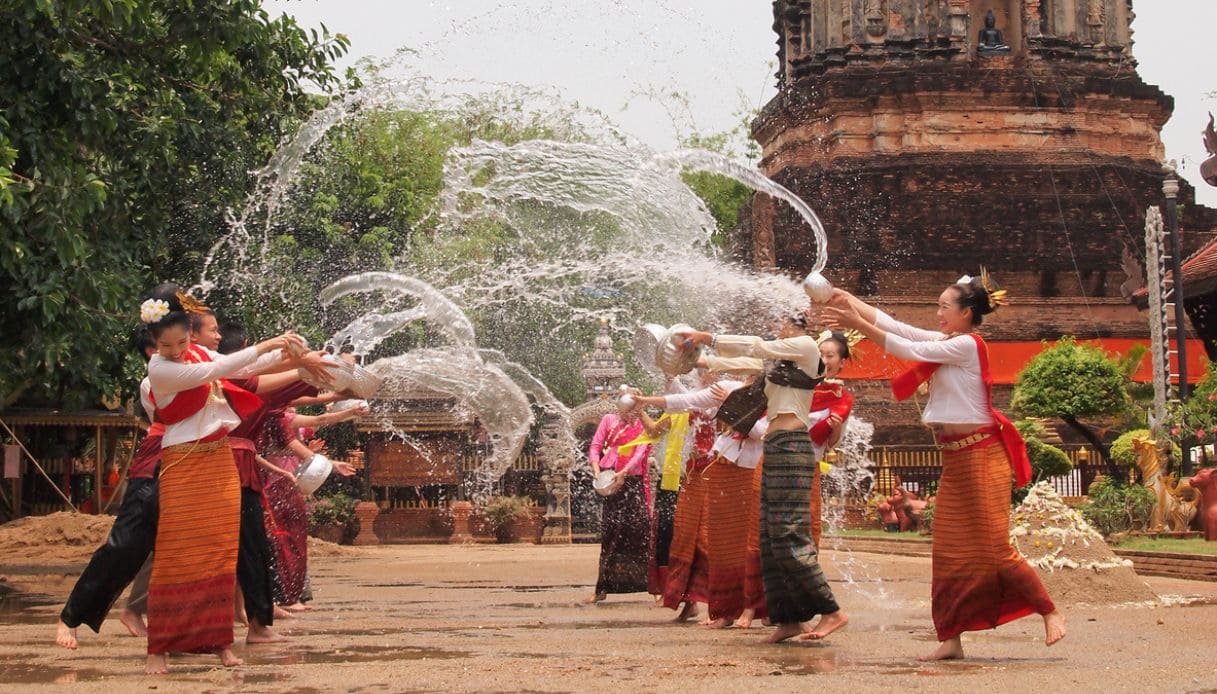After the Khon dance, the Thai massage and the acrobatic Nora dance, also the Songkran, the Thai New Yearcan boast UNESCO recognition as an Intangible Cultural Heritage of Humanity.
The festival, which marks the entry into the zodiac sign of Aries, takes place in mid-April and is the time when families reunite to pay homage to the ancestors, elders and sacred images of the Buddha.
Read also: Hottest Destinations for April
What is it and what is its legendary history
Songkran comes from the Sanskrit term saṃkrāntior movement, to indicate the movement of the sun within the zodiac: and if there is a songkran every month, the most important is the one that falls between April 13th and 15th marking the Thai Buddhist New Year, when the sun transitions from the sign of Pisces to Aries.
It is the beginning of the new year, a symbol of physical and spiritual purification, and its origins lie in the legend of the death of Bhrama Reddishil Kapila Brahma.
In fact, one day he decided to verify the wisdom of a very intelligent young man who knew how to talk to birds, Thammabalproposing three riddles to solve in seven days: the stakes were the loser’s head.
Not knowing the answer, Thammabal decided to kill himself rather than submit to the defeat but, having arrived near a palm tree, he listened to an eagle whisper the solution to its young: he then returned to the divinity who, defeated, ordered one of his sects daughters to cut off his head.
From that day, every year, one of the daughters is called for the occasion During Songkran, leads his father’s head in procession towards the sacred Mount Meru.
How to celebrate Thai New Year
Songkran is first and foremost a religious holiday whose celebrations take place over three days: April 13th (Maha Songkran) when the sign of Pisces ends on April 14 (Wan Nao)the transition between the old and new years, and April 15th (Wan Thaloeng Sok) the beginning of the new era.
On the eve, the faithful thoroughly clean their homes and eliminate the superfluous so that they are ready and perfect for the year that is to begin while on the morning of the 13th they go in procession to the village temple to bring food to the monks. The afternoon is dedicated to purification rituals: after washing the representations of the Buddha, the young people pour scented water into the palms of the hands and feet of the elderly, as a sign of respect.
Furthermore, during the three days of celebration, people go to the temple with candles, incense sticks and scented water and place them in front of the Buddha altar.
In addition to religious ceremonies, Thai New Year is also celebrated with the “Songkran Water Festival“, a real “water battle” in the streets, squares and parks of the city: to “wash away” bad luck in a cheerful and fun way, water is thrown on passers-by with a “battle” of water balloons, buckets, canes, guns and toy machine guns.
It is a fun festival that involves everyone, from residents to tourists, and, among processions and colorful floats, they set up stations for throwing water on passers-by as a sign of purification aimed at removing negative energies.
Read also:Calangute-Baga-Candolim: Everyone greets the queen





